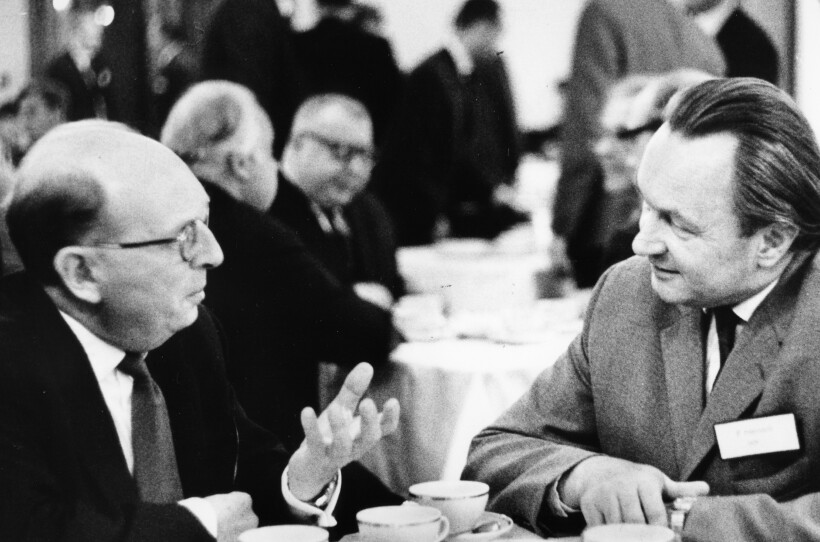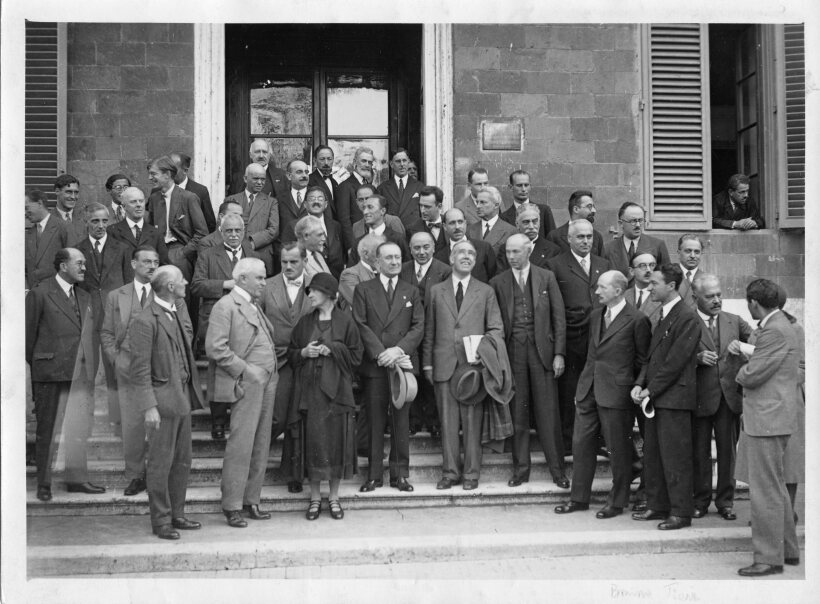Adding Your Photos to the Story of Science is Now Easier Than Ever
If you’ve ever snapped a photo of your research group celebrating a submission of a paper, your mentor at the whiteboard explaining a tricky concept, or your labmates hanging out at a conference dinner or going on a hike together, you are in possession of records of the physical sciences that may be worthy of preservation in AIP’s visual archives.
AIP’s photo collection has always been built through gifts and donations of photos from members of our scientific communities. With the launch of this easy one page digital photo submission tool
Faces of the Physical Sciences
We launched this tool as part of our Faces of the Physical Sciences initiative, a key item in AIP’s 2025 Research Agenda
Our collection is your collection
By offering your photos, and the stories behind them, you are adding to a resource that is widely used by members of the physical science community and by historians and other researchers who study the physical science community. Photographs can give researchers information about people, places, objects, and events and express ideas that are not easily conveyed in other media, such as the exact layout of a lab or interpersonal dynamics between individuals in facial expressions. They are a way to learn about what is important to the people in the photograph and the photographer. They provide a view of the past that is impossible to capture through words alone.
Pictures of scientists play an important role in shaping ideas about what kinds of people practice science and what kinds of activities scientists engage in, so it is critical we have access to rich and diverse visual documentation of both who practices science and the full lives science professionals lead. The most widely used resource of AIP’s Niels Bohr Library & Archives
A core strength of our collection is its inclusion of both formal and candid photos of physical scientists. With that noted, the collection in its current state does not represent or cover enough of the full range of professionals and practices in the physical sciences. Because our collection has largely grown from donations of sets of analog photos from individuals, often at the culminations of their careers, there is a big lag between who and what is documented in our collection and the people at work today.
The traditional method of photo donations also does not align well with the way that people now engage with photography in our society. While analog photos pile up in physical space and become materials for people to sort through and donate later in life, digital photos do not accrue and persist in the same sort of way. People now take and share digitally share photos in a wide number of ways, and we want to make it easy to be part of the way that people share and circulate their photos.
Photos influence public and professional understandings of science: who we imagine scientists to be, what we assume scientific work looks like, and whose contributions get remembered. Our goal is to support research, education, and public dialogue by cultivating a visual archive that is as diverse and dynamic as the community it represents.
Digital technology has dramatically increased the extent to which physical scientists are documenting their lives and worlds in photography. So, we have a major opportunity to build on the legacy of Segrè’s gift, and we are inviting all members of our physical science community to join us in this endeavor. It’s easy for you to get involved. Below is some info on what we are looking for and how the photo submission process works.
What we’re looking for
We welcome individual photo submissions that relate to the personal and professional lives of people in the physical sciences. This includes:
- Formal and informal portraits of physical scientists at any career stage
- Candid photos of everyday scientific life: in labs, classrooms, field sites, conferences, or social gatherings
- Images of instruments or research settings, ideally with identifying information
- Snapshots that show the breadth of scientific communities—teams, families, mentorship moments, group traditions
We especially encourage submissions that help us expand coverage of people and experiences represented in the archive. This is a chance to help us better show the full range of people and experiences that are a part of the various cultures involved in the physical sciences.
Most importantly, we ask that you take time with your photo descriptions. Photo metadata is a gift to the future and to your community: it makes your photo findable, usable, and meaningful. Who is in the photo? When and where was it taken? What is happening? What did it feel like to be there? These small details are what turn an individual snapshot into the rich kernel of our broader shared story.
How to contribute
All you need to do to submit a photo is to go to the photo submission page
When you submit a photo through our new submission form, you’ll notice that you can only submit one photo at a time. That is by design:, we encourage this approach because we are generally interested in your curated and individually described selections rather than full runs of images. Those are what we know our photo collection users are most interested in finding – individual photos with unique stories behind them.
If you have a larger collection that you believe should be considered as a whole (for example, a complete lab archive or set of photos from a long-term project), we’d love to talk. Contact us directly
Help build this collection today
With your help, the ESVA will continue to be a living resource for understanding the physical sciences—not just as abstract knowledge, but as a human endeavor. When you contribute, you’re not just sharing a photo. You’re sharing a story, a community, a memory.
We often say that the ESVA holds over 30,000 images—but the truth is, it holds 30,000 moments in time, captured through lenses and preserved through care. Help us add yours.









